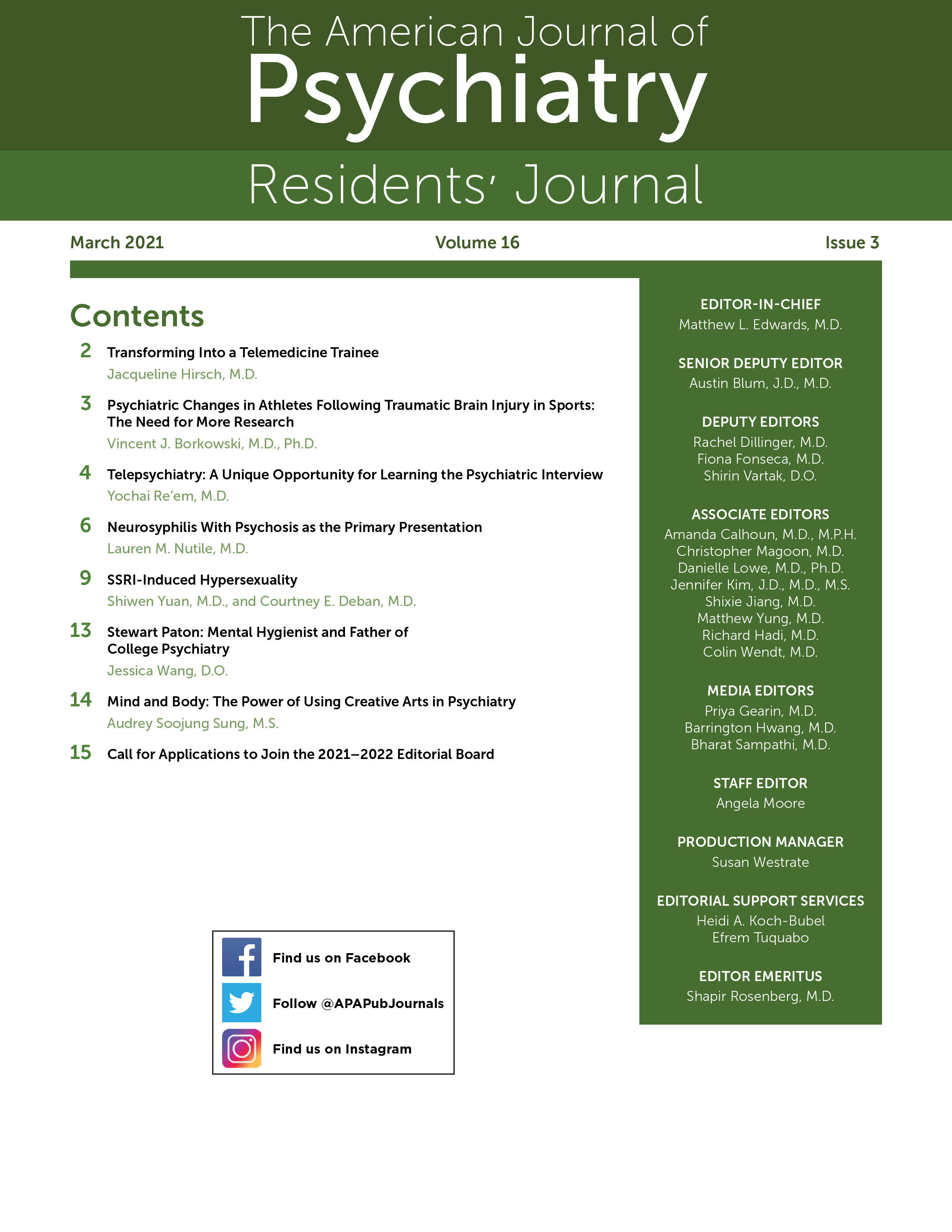Psychiatric Changes in Athletes Following Traumatic Brain Injury in Sports: The Need for More Research
Traumatic brain injury (TBI) is a major source of morbidity and mortality in contact sports. TBIs can result in many short-term and long-term physical and mental sequelae that are currently being actively researched. The full range of TBI-related psychiatric changes has not yet been comprehensively examined. It has been suggested that a history of head trauma sustained in contact sports, such as professional football, may be associated with changes in personality and cognitive function in the adult population (1, 2). However, more research is needed for determining a link between TBI and long-term psychiatric changes, such as depression and anxiety.
In terms of psychiatric impact, the SHEFBIT study—a prospective study of adult emergency department admissions in the United Kingdom—noted an increased prevalence of depression following TBI (2). As the number of TBIs increases, the prevalence of depression can be postulated to increase. Some patients who have sustained a brain injury may not have been diagnosed or have received treatment (3). Research that shows a causal link between participation in contact sports in early life and later-life psychiatric manifestations, such as dementia due to TBI, is lacking. Bieniek et al. (1) suggested that manifestations such as depression may occur in the short-term in association with brain injuries acquired during contact sports. As the number of participants in contact sports increases, we may well see a concomitant increase in mood symptoms and disorders and other psychiatric illness in affected populations. So far, we lack definitive long-term studies that follow young participants in contact sports who suffer TBI and who later develop mood or other disturbances. Singh et al. (2) have linked TBI (unrelated to sports) to depression in young patients in prospective studies. But longer-term studies would be useful.
As for changes on the cellular level, Ling et al. (4) have shown that contact sport–related brain injuries have impacts beginning in childhood and adolescence. Research on concussions in young athletes suggests possible neurodegeneration (1, 4) or disruption of the blood-brain barrier (5). These cellular-level events could predispose toward psychiatric changes, such as depression and anxiety (4, 5). These findings underline the severity of potential sequelae of brain tissue injury and point to a potential mechanism for the development of psychiatric illness. Few animal studies exist, although mood disorders and higher-level cognitive disorders can be difficult to detect in low-level mammals. There is a need to determine which levels of activity are safe and which sports may present higher risks of neurological changes for participants.
Ultimately, more research is needed on the link between contact sports and psychiatric illness resulting from TBI. Information on causation and not merely association is needed, as are details of the natural history of any such association. More definitive, high-quality evidence from large-scale, prospective, cohort studies are needed to help establish guidelines and to inform future risk assessments. As more individuals participate in contact sports, the full impact of participation on future psychiatric health has not yet been detailed, making this a vital area of study.
1. : Association between contact sports participation and chronic traumatic encephalopathy: a retrospective cohort study. Brain Pathol 2020; 30:63–74 Crossref, Google Scholar
2. : Prevalence of depression after TBI in a prospective cohort: the SHEFBIT study. Brain Inj 2018; 32:84–90 Crossref, Google Scholar
3. : Emergency department visits for sports- and recreation-related traumatic brain injuries among children—United States, 2010–2016. Morb Mortal Wkly Rep 2019; 68:237–242 Crossref, Google Scholar
4. : Neurological consequences of traumatic brain injuries in sports. Mol Cell Neurosci 2015; 66(pt B):114–122 Crossref, Google Scholar
5. : Blood-brain barrier dysfunction in a boxer with chronic traumatic encephalopathy and schizophrenia. Clin Neuropathol 2019; 38(2):51–58 Crossref, Google Scholar



